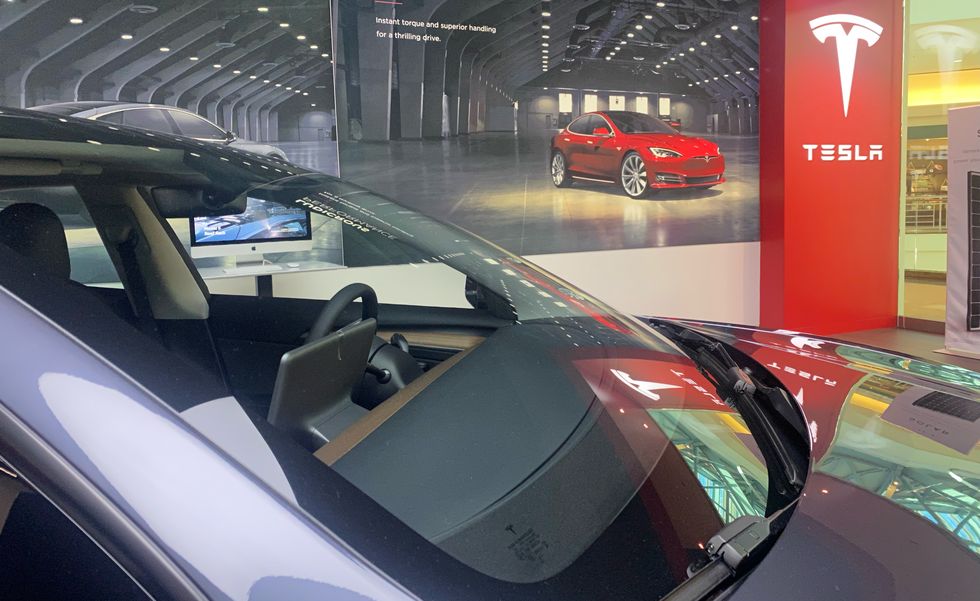- The Sierra Club has studied the plug-in vehicle purchasing landscape and found that we still have a long way to go to make more electric vehicles available in more areas.
- By 2022, an EV could only be found at 34 percent of all US car dealerships, and less than half of those without one were interested in selling one if they could get one.
- In ZEV states, where laws are in place to force higher levels of EV sales in the coming years, there are more dealers willing to sell EVs than elsewhere. The laws seem to be working slowly.
To the surprise of anyone who has been shopping for an electric vehicle in recent months, there aren’t that many electric vehicles out there. We now have data to back up the flow of anecdotes about five-figure dealer adjustments and people selling their places online on near-endless waiting lists for some models. The Sierra Club released a report this week called “A National Study of the Electric Vehicle Buying Experience,” and well, things could be better.
To understand the EV landscape for the new study, Sierra Club staff and volunteers contacted more than 800 dealerships in the U.S. between June and November 2022. They determined that only 34 percent of auto dealers in the USA had electric vehicles for sale during the survey. 2022. Of course, the supply chain disruptions caused by the pandemic made buying all kinds of products a challenge these past few years, and new cars were certainly affected. Despite this, less than half (44%) of the 66% of dealers who did not have an electric vehicle for sale said they would sell electric vehicles if they could get one.
Broad definition of “EV”
Before we go any further, for this study, the Sierra Club counts both battery electric hybrids and plug-in hybrids as electric vehicles. While we typically differentiate between these powertrains, we’ll use EV as a catch-all for this article to refer to both types. The shopping experience survey is a follow-up to the Sierra Club’s 2019 report called “Rev Up.”
EV availability varies by region, of course, and there’s something interesting happening in California and the 15 states that have adopted California’s Zero Emission Vehicle (ZEV) mandates. ZEV states differ in how they will implement their versions of the various rules, but the important part here is that these laws set clear targets for future levels of electric vehicle sales. States following California’s Advanced Clean Cars II program, an August 2022 update to ZEV rules, for example, require 100 percent electric vehicle sales by 2035.
ZEV states are therefore already and can be expected to continue to be leaders in the shift to electrification. But when the Sierra Club broke down its findings, it found that the dealer picture was almost exactly the same in ZEV states and those without such future mandates. The number of dealers nationwide with an EV was 34 percent. In ZEV states, it was 35 percent.
What do dealers think about selling electric vehicles?
Where ZEV states differ is how dealers feel about selling EVs. Dealers without connected vehicles to sell were more likely to wish they did so in ZEV states than others. While the national average was 44 percent, it was 52 percent in ZEV states and only 41 percent in non-ZEV states. In other words, while supply chain and production constraints affected dealers across the country, the people who mattered were in states they said will force more EV sales in the coming years.
Solutions to the electric vehicle drought must come from the companies that build the cars, the Sierra Club said. Despite the many, many billions already pledged to shift the bulk of new car sales to electrified vehicles over the next decade, it’s not enough, it seems. “It is the responsibility of manufacturers to deliver more electric vehicles to all dealers,” the report says. “The bottom line is that automakers need to invest more in electric vehicle production to meet consumer demand that is at an all-time high.”
This content was imported from the survey. You may be able to find the same content in another format, or you can find more information on their website.
Collaborating editor
Sebastian Blanco has been writing about electric vehicles, hybrids and hydrogen cars since 2006. His articles and car reviews have appeared in New York Times, Automotive News, Reuters, SAE, Autoblog, InsideEVs, Trucks.com, Car Talk and other outlets. His first green car media event was the launch of the Tesla Roadster, and since then he has been tracking the shift to gasoline vehicles and discovering the importance of new technology not only for the automotive industry. automobile, but for the whole world. . Throw in the recent shift to self-driving vehicles, and more interesting changes are happening now than most people might realize. You can find him on Twitter or, on good days, behind the wheel of a new EV.



